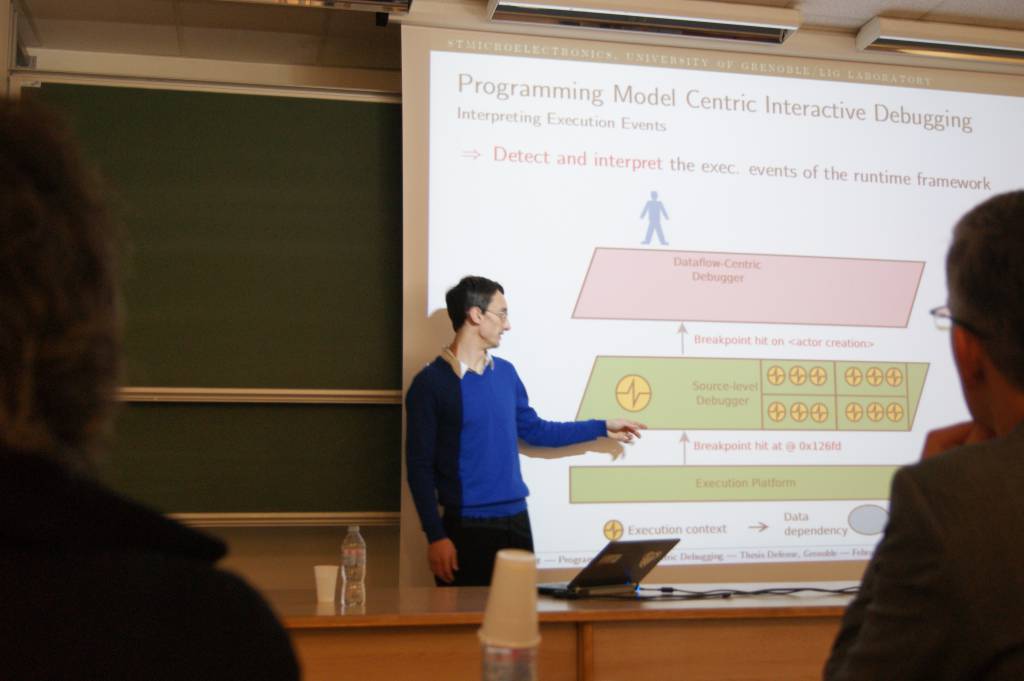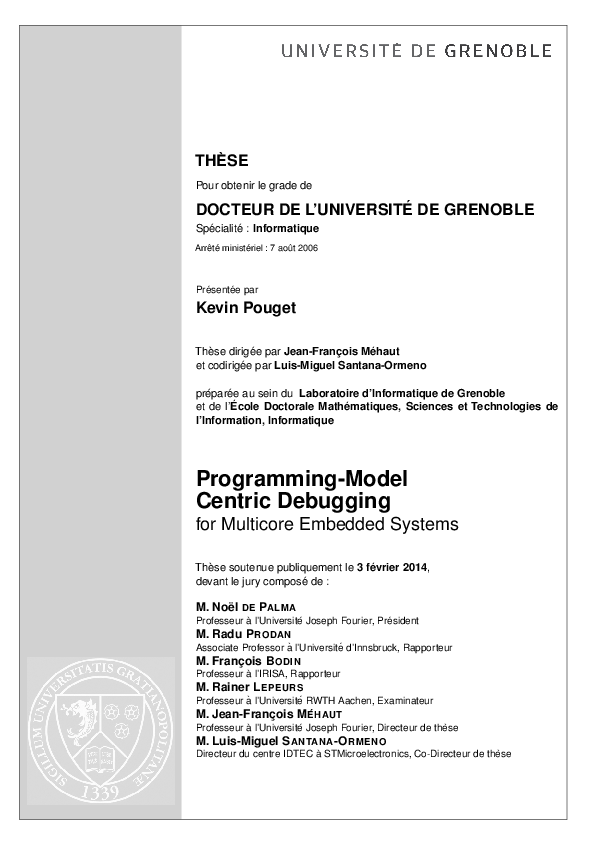I'm Kevin Pouget, from Grenoble area, France. I received my PhD in Computer Science last February (2014) after defending my thesis on ''Programming-Model Centric Interactive Debugging for Multicore Embedded Systems'', in partnership with STMicroelectronics Crolles.
Now I'm post-doc/engineer at University Joseph Fourier, still on the Nanosim/CORSE, continuing my PhD work as part of the Nano2017 national research project (although debugging and embedded system has (nothing) to do with nano technologies!).
My research (and personal) interests deal with:
- interactive debuggers (implementation, enhancement, usage, ...), in particular GDB,
live debugging and tracing tools in general (strace, ltrace, valgrind, pdb, ...)
design and implementation of runtime libraries (for GPU computing, multithreading, message passing, ...)
- operating systems (Linux kernel) and programming language (C/asm, Python, ...) support for all of the above
I am also a free software enthusiast (i.e. avid user in my computing environment, promoter if it comes to the discussion, contributor if I need to add missing features to the tool I use) and maybe a software hacker (in ESR's sense): I love understanding how things (*nix tools, Linux, Python) are implemented, how they're supposed to be used, and how you can utilize them to do something completely different.
When I've got a bit of free time on a computer, I also do some Java/Web development (WebAlbums project) for managing my photo collection, and work on my online weather station report, although I can frankly say that I have PHP and Javascript programming languages! I also work on my VPS Linux server, the one hosting this very blog, where I learn about Apache administration and different web services. I also like playing/trying with multiple *nix/Linux distribution: Fedora on my work laptop, Archlinux on my desktop, Debian on the VPS, Raspbian on my rasberry and Mint on my wife's laptop!
And when I manage to let my computers alone, I like going into the surrounding mountains for a walk, a hike or a ski tour, almost never without a camera. I also train weekly in Judo and scuba diving (level 2* diver), and I love white water paddling in kayak, but barely have time for that any more.





 (gdb) break *0x972
(gdb) break *0x972







